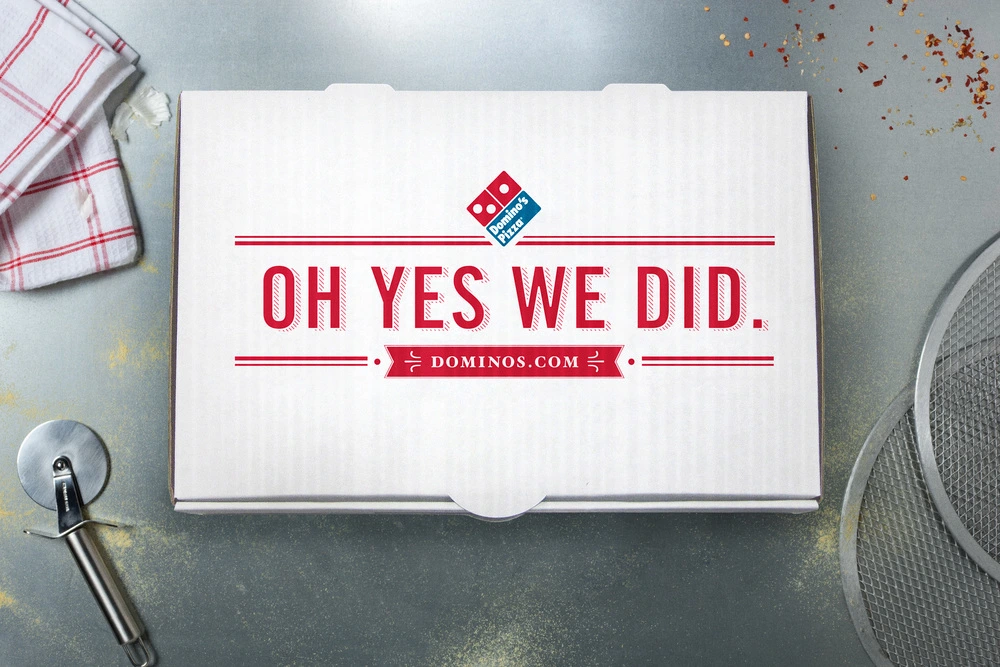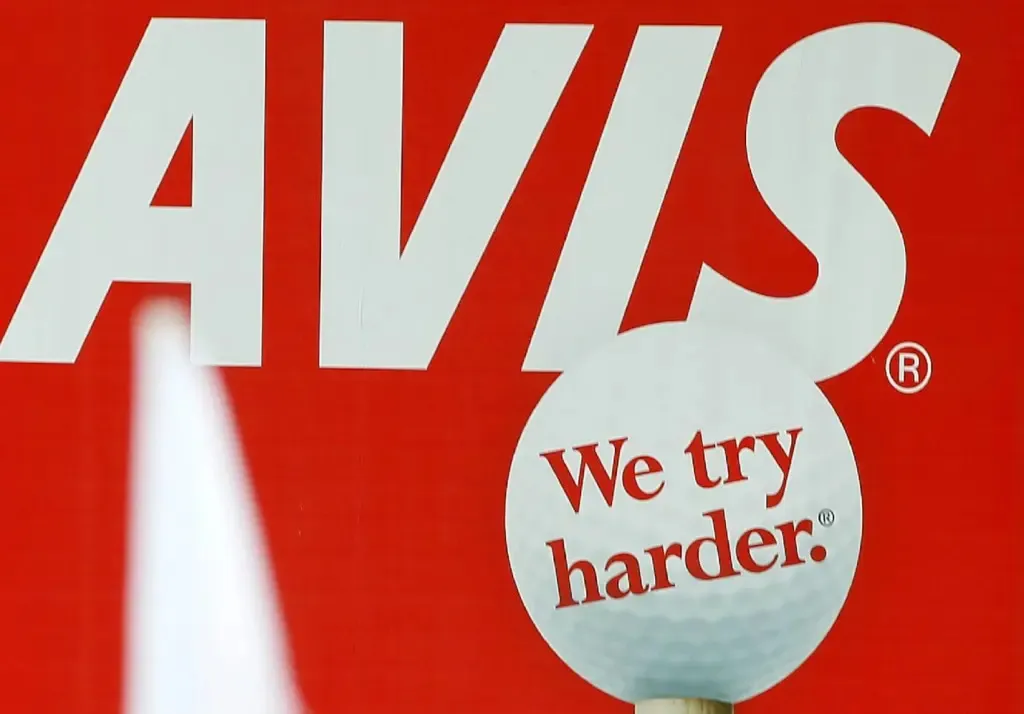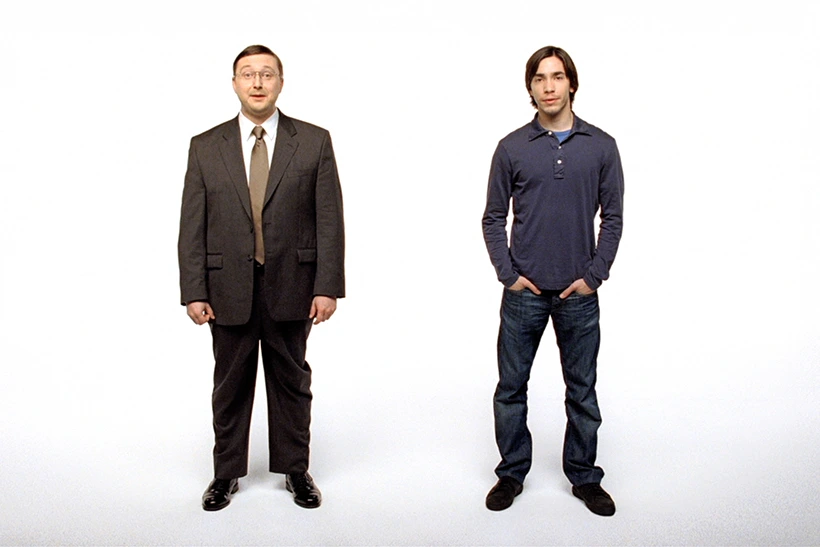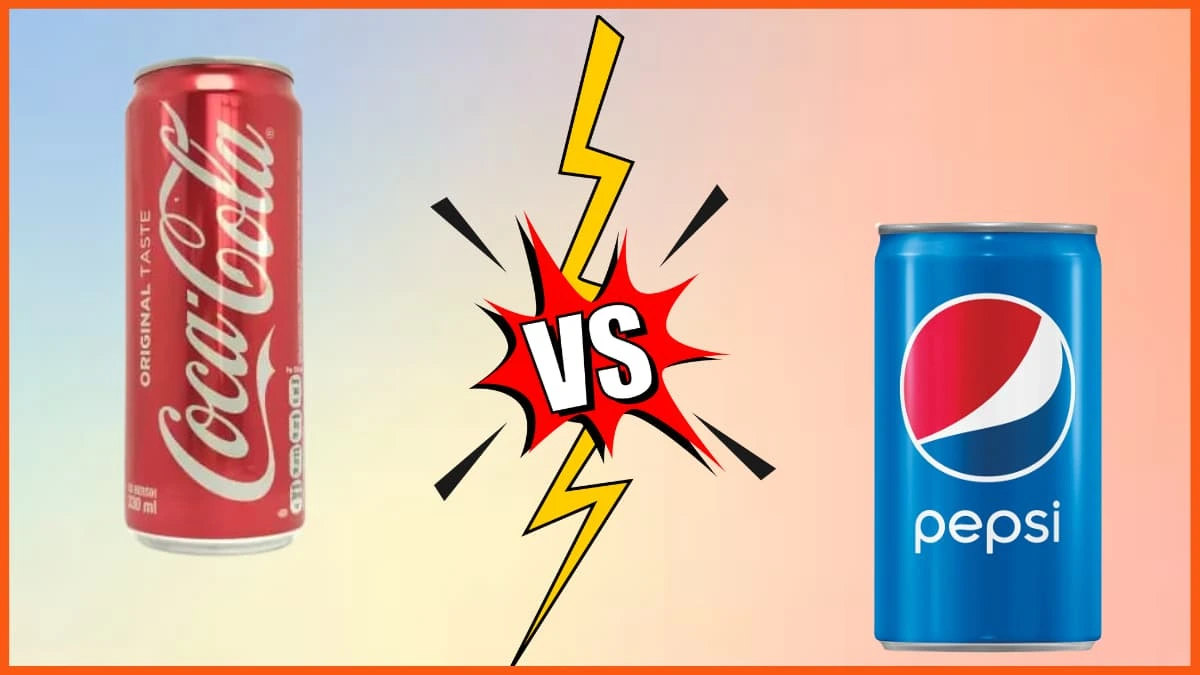These days, marketing is nothing less than a battleground. Every industry has been saturating at different speeds, consumer attention spans are also shrinking, and every brand is fighting for the same customers. The only key to survival is creating differentiation that makes you better than your competitors.
And to do that through marketing, the bold ones have chosen competitive advertising for decades.
To be honest, competitive advertising is less about promoting a product and more about making a persuasive case for why your product is superior to the alternatives. To do that, some brands take a direct approach by calling out competitors by name. Others take a more subtle route — positioning their brand as the obvious best choice without mentioning the competition outright.
When done well, competitive advertising can not only strengthen brand positioning, but also shift market perception, and increase customer acquisition. However, when done poorly, it can destroy a brand's integrity.
This guide will cover everything you need to know about competitive advertising so that you can apply the success stories and avoid the failures.
What is competitive advertising?
Competitive advertising is a marketing strategy that positions one brand’s product or service as superior to a competitor’s. This can be done by directly comparing features, showcasing advantages, or highlighting a competitor’s weaknesses.
While often confused with comparative advertising, there’s a slight distinction between them:
- Comparative advertising explicitly names a competitor and makes direct comparisons.
- Competitive advertising may or may not name a competitor but always aims to influence how consumers view a brand concerning others.
So yes, comparative advertising can also be called competitive advertising. However competitive advertising cannot be referenced as comparative advertising.
Importance of competitive advertising in digital marketing
As we have stated before, thanks to the increasing competition among brands, consumers have too many options to choose from these days. Whether it’s a smartphone, a coffee brand, or a project management tool, customers are bombarded with options. Competitive advertising helps brands cut through the noise and guides consumers to purchase without much research.
Here are some key benefits of doing competitive advertising:
- Improves brand positioning – Shows customers why one product is better than another.
- Influences consumer perception – Creates a mental association between the brand and its strengths.
- Increases conversions – A clear, compelling comparison can help customers make faster decisions.
A Nielsen study found that 59% of consumers prefer brands that provide clear comparisons because it helps them make informed choices.
Now, let’s break down the different types of competitive advertising.
Types of competitive advertising
Competitive advertising takes many forms, depending on how directly a brand wants to challenge its competitors. Some companies choose to name their rivals outright, while others take a more subtle approach. Each method comes with its own risks and rewards, and understanding when to use each one is key to executing a successful competitive ad campaign. Before diving into the details, here’s a quick snapshot on different types of competitive advertising:
| Type | Advantages | Disadvantages |
|---|---|---|
| Direct Comparative Advertising | Clearly differentiates from competitors, grabs attention, can persuade consumers | Legal risks, can appear aggressive, potential backlash from competitors |
| Indirect Comparative Advertising | Subtly positions the brand as superior without naming competitors | Less direct impact, consumers may not immediately understand the comparison |
| Negative Advertising | Can create doubt about competitors, shifts public perception | High risk of backlash, legal scrutiny, can damage brand reputation |
| Imitative Advertising | Leverages existing branding success, attracts competitor’s audience | Can seem unoriginal, may not build strong brand loyalty |
Direct comparative advertising
Direct comparative advertising is the most explicit form of competitive advertising. A brand directly mentions its competitor by name, compares specific features, and makes a case for why its product is better. These ads are often bold, engaging, and attention-grabbing, but they come with legal risks if the claims made aren’t backed by data.
Here is an example of direct competitive advertising: with their “Oh Yes We Did It” campaign, Domino’s took an unconventional approach by admitting its old pizza wasn’t great. They then compared their new formula directly to their previous product and competitors, showing why they had improved.

Domino's "Oh Yes We Did" campaign
When to use it
- When your product has a clear, provable advantage over a competitor.
- When you want to directly challenge a market leader and position yourself as a better alternative.
- When your audience is already aware of your competitor and the comparison will reinforce their decision-making process.
Risks and challenges
- Legal scrutiny – Some countries have restrictions on directly naming competitors, and false claims can lead to lawsuits.
- Reputation risk – If done poorly, direct comparisons can make a brand seem aggressive or desperate.
- Potential backlash – A competitor may respond with counter-ads, shifting the narrative.
Indirect comparative advertising
Indirect comparative advertising does not explicitly name a competitor but strongly suggests that the brand being advertised is superior. These ads highlight unique product benefits that competitors lack, allowing consumers to make the comparison themselves.
This method is often preferred because it avoids legal risks while still positioning a product as the best choice.
Here’s an example of indirect comparative advertising: When Avis was losing market share to Hertz, they launched their “We Try Harder” campaign positioning themselves as the hardworking underdog. The tagline, "We Try Harder," subtly suggested that larger rental companies had grown complacent.

Avis' "We Try Harder" campaign
When to use it
- When you want to position your brand as superior without directly naming a competitor.
- When your competitor is already well-known, and customers will understand the reference without it being spelled out.
- When you want to avoid legal challenges while still making a competitive statement.
Risks and challenges
- Less direct impact – Some consumers may not immediately make the connection.
- Unpredictable competitor response — Competitor responses may be harder to predict, as the ad isn’t attacking them outright.
Negative advertising
Negative advertising focuses on exposing a competitor’s weaknesses rather than simply highlighting a brand’s strengths. This strategy is common in political campaigns but is also used in the corporate world when a brand wants to create doubt about its competitors.
While negative advertising can be effective, it is also risky. If it comes across as petty or dishonest, it can damage the attacking brand as much as (or more than) the target.
Here’s an example of negative advertising: Samsung released ads making fun of Apple for removing the headphone jack. However, when Samsung later removed the headphone jack from its own devices, it faced massive backlash for hypocrisy.

Still from Samsung's anti-Apple campaign
When to use it
- If done well, negative advertising can shift public perception and create doubt about a competitor’s reliability.
- If executed poorly, it can make a brand seem desperate or overly aggressive.
- Consumers tend to dislike brands that attack others too frequently, preferring companies that focus on their own strengths.
Risks and challenges
- Risk of backlash and damage to brand reputation – If an ad feels overly aggressive, it can alienate consumers rather than attract them.
- Legal risks and potential lawsuits – Negative advertising must be factually accurate, or it could result in legal action from competitors.
- Unintended brand reinforcement – By focusing too much on criticizing a competitor, the ad may give them free publicity, keeping them top-of-mind for consumers.
Imitative advertising
Imitative advertising mimics the style, messaging, or format of a successful competitor’s campaign to attract a similar audience. While it can be seen as a shortcut to success, it requires careful execution to avoid looking like a cheap knockoff.
This strategy works best when a brand positions itself as an alternative rather than a direct rival.
One ideal example of imitative advertising is budget smartphone brands copying Apple’s design. Many Android manufacturers have released phones with similar sleek designs, notch placements, and UI layouts to appeal to customers who like Apple’s aesthetics but want a cheaper alternative.

Redmi - one of the many iPhone look-alikes
When to use it
- If customers already like a competitor’s branding or messaging, imitating it can make the transition easier.
- Customers subconsciously link the imitative brand with the original, boosting credibility.
- The focus stays on the product’s advantages rather than a competitive battle.
Risks and challenges
- Can come across as unoriginal — This can happen if the imitation is too obvious.
- Might be ignored — If customers already have strong brand loyalty to the original, they might ignore the protagonist brand.
Strategies for effective competitive advertising
Competitive advertising is all about making a compelling case for consumers of another brand to choose yours. However, there are some techniques that should be adopted to make this kind of advertising impactful. Sharing a few of those below:
| Strategy | Description |
|---|---|
| Conducting thorough competitor analysis | Monitor competitors using tools like Competitor Intelligence Tool (COIN) by Kaya and track their ads, messaging, and placement. Analyze branding, pricing, and customer feedback to find gaps where your brand excels. |
| Highlighting unique selling propositions (USPs) | Emphasize what sets your brand apart with specific advantages. Use data, testimonials, and case studies to validate claims on speed, quality, or affordability. |
| Using customer testimonials and reviews | Social proof builds credibility by showcasing real user experiences. Featuring competitor comparisons in customer reviews makes advertising more persuasive. |
| Utilizing humor and emotional appeals | Humor increases ad shareability and engagement, as seen with Wendy’s. Emotional storytelling fosters brand connection through trust, nostalgia, or inspiration. |
| Strategic media placement | Run YouTube ads before competitor videos to influence decisions early. Target competitor brand keywords in Google Ads to capture high-intent customers. |
Case studies of successful competitive advertising campaigns
Here are some successful case studies from where we can take some lessons on competitive advertising:
Apple vs. Microsoft: "Get a Mac" campaign
Launched in 2006, Apple’s “Get a Mac” campaign was one of the most successful competitive advertising efforts of all time. It featured a casual, laid-back Mac user (Justin Long) and a stiff, outdated PC user (John Hodgman) to illustrate the difference between Macs and PCs.
Strategy
- Used humor and storytelling instead of dry technical comparisons.
- Focused on user experience, highlighting how Macs were easier to use and less prone to viruses.
- Positioned Apple as modern, cool, and creative, while making PCs seem dull and corporate.
Result
- The campaign ran for four years, reinforcing Apple’s brand identity and increasing Mac sales by 39% in its first year alone.
- It redefined consumer perception of Apple, helping the company build its reputation as an innovative and user-friendly brand.

Apple's "Get a Mac" campaign
Pepsi vs. Coca-Cola: The Pepsi Challenge
The Pepsi Challenge began in the 1970s as a bold marketing move to prove that consumers preferred Pepsi’s taste over Coca-Cola. The campaign involved blind taste tests where participants would try both colas without knowing which was which.
Strategy
- Leveraged scientific-looking tests to make the campaign feel credible.
- Created an interactive experience, allowing consumers to take part in the challenge themselves.
- Focused on taste as the deciding factor, avoiding direct attacks on Coca-Cola’s brand identity.
Result
- Pepsi gained significant market share in the 1980s as a result of the campaign.
- However, Coca-Cola responded by launching New Coke, a reformulated version of its soda—which ultimately failed and led to the reintroduction of Coca-Cola Classic.
- Despite Pepsi’s temporary gains, Coca-Cola remained the dominant brand long-term, showing that taste preference alone isn’t enough to shift market loyalty permanently.

Coca-Cola vs. Pepsi
Burger King vs. McDonald’s: "Whopper Detour" campaign
In 2018, Burger King launched a highly innovative campaign that encouraged customers to order a Whopper for just 1 cent—but only if they were physically near a McDonald's location. The campaign hijacked McDonald's foot traffic and turned it into Burger King sales.
Strategy
- Used geo-targeting technology to identify users near McDonald's stores.
- Gamified the experience—customers had to download the Burger King app and place an order while within 600 feet of a McDonald’s.
- Created a viral stunt that got people talking, engaging users beyond just the offer itself.
Result
- Over 1.5 million app downloads in the first 9 days.
- 37% increase in foot traffic to Burger King locations.
- The campaign was widely recognized as one of the most creative uses of mobile technology in advertising.

Burger King's "Secret Whopper" campaign
Asana vs. Monday.com: Competing for search intent
In the crowded project management software industry, Asana and Monday.com are two of the biggest players. Rather than relying on brand recognition alone, Asana strategically bid on search ads targeting Monday.com users, positioning itself as a strong alternative.
Strategy
- Asana ensured that when users searched for “Monday,” their ads appeared at the top of search results by bidding on competitor keywords.
- Instead of a generic ad, Asana used targeted messaging by emphasizing its key differentiators, such as ease of use and team collaboration features.
- Clicking on Asana’s ad led users to a comparison landing page that showcased why it was a better option than Monday.com.
Result
- Increased brand awareness among users actively searching for Monday's solutions.
- Captured high-intent customers who were already considering a project management tool.
- Demonstrated how competitive advertising on search engines can effectively redirect traffic and market share.

Asana bidding on Monday's brand keyword
Potential drawbacks and challenges
Competitive advertising, while effective, comes with risks that brands must carefully navigate. A well-executed campaign can boost brand credibility and market share, but if done poorly, it can lead to consumer backlash, legal trouble, or wasted resources. Here are some key challenges to consider before launching a competitive ad strategy:
1. Risk of negative consumer perception
Consumers may see competitive ads as hostile if executed poorly, creating resentment rather than admiration. Instead of winning over customers, brands risk coming off as insecure or petty, especially if the comparison feels forced or unnecessary.
To prevent this, comparisons should feel fair and factual rather than exaggerated. Audiences appreciate transparency and humor when done tastefully, but brands that rely on cheap shots or misleading claims often lose trust instead of gaining market share.
2. Legal disputes and regulatory challenges
Many countries have strict laws on competitive advertising, with the FTC in the U.S. requiring truthfulness and the EU prohibiting misleading comparisons. A failure to comply with these regulations can result in fines, lawsuits, and mandatory ad retractions, damaging both finances and brand reputation.
To avoid legal trouble, all comparative claims must be substantiated with verifiable data. This means using real product comparisons, independent reviews, or customer testimonials to reinforce messaging rather than making broad, unverified claims that could be challenged in court.
3. Resource investment considerations
Competitive advertising requires budget, data, and creative execution, as it demands extensive research, strategic messaging, and potential legal reviews before launch. Without proper planning, brands risk wasting resources on ads that fail to resonate or, worse, create a backlash.
Before investing in a competitive campaign, brands should assess whether it aligns with their long-term business goals. If a company lacks a clear differentiation strategy or if the market isn’t receptive to comparative messaging, the effort may not deliver the expected ROI, making other forms of advertising a better investment.
FAQ
Is competitive advertising suitable for my brand?
Is competitive advertising costly and time-consuming?
How much does digital marketing cost for startups?
Final thoughts
If done right, competitive advertising can play a big role in shaping consumer perception and creating brand preference in a crowded market. The right competitive strategy doesn’t just highlight why a brand is different, it persuades consumers that it’s the better choice.
However, competitive advertising isn’t a one-size-fits-all approach. A well-crafted campaign requires strategic execution, deep competitor insights, and a clear understanding of audience behavior. Brands that succeed in this space are those that balance boldness with credibility, competition with creativity, and facts with storytelling.
While some companies thrive on direct comparisons, others benefit more from subtle positioning that naturally shifts consumer preference. Regardless of the approach, one thing is certain—the brands that stay passive risk being outshined by those that actively shape the narrative in their industry.
And to make it work, you need a foolproof strategy that weighs all sorts of odds and evens. If your team doesn’t contain skilled marketers or strategists who have past experience running these campaigns, it is always better to delegate sensitive and high-risk projects like this to marketing agencies.

